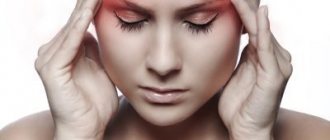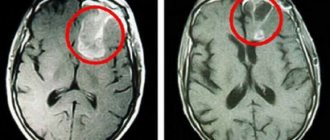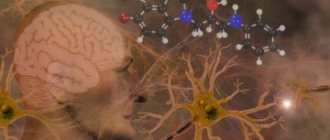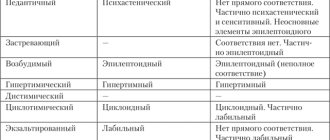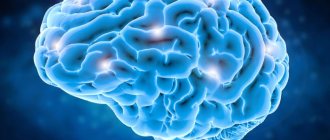Greetings, dear readers and guests of the blog. During the existence of this site, I was asked many times in comments and personal messages how I managed to get rid of VSD. In fact, there were a lot of actions taken and I am gradually sharing all of this in separate articles. Actually, this is why I started a blog. I have already described what I did to get rid of panic attacks and how I fought the fear of driving in public transport, and much more. But many readers want to see all my actions in one article.
There is too much information and in any case I will not be able to describe in detail everything that I did in one post. It turned out to be very long. But I will try to at least briefly and as succinctly outline everything that I managed to do to return health, balance and joy to my life.
I will say right away that I absolutely do not believe that my actions are correct or true. And they probably won't suit everyone. I am not a doctor, a licensed psychologist, or a great sage. I am only sharing my personal experience, and if you decide to follow it to one degree or another, then do not forget that only you are responsible for your actions.
I also already wrote about how neurosis and a VSD crisis happened to me, and how bad I felt, so I begin my presentation from the moment when I already began to take concrete actions to restore my health and return to normal life.
The concept of vegetative-vascular dystonia
VSD syndrome consists of periodic changes in vascular tone of the autonomic nervous system. As a result of such disorders, patients may experience various pathological reactions that are functional in nature. Changes in vascular tone lead to problems with the innervation of almost all organs. Depending on which area the dysregulation predominates, the clinical picture may differ. Vegetative-vascular dystonia is not a fatal disease, but functional disorders are quite dangerous if an exacerbation develops. The most common symptoms of VSD include pressure surges, dizziness, cardialgia and indigestion.
Vegetative-vascular dystonia can make itself felt quite often or not manifest itself for a long time. This depends on the individual characteristics of the body, as well as on the presence of background pathologies and provoking factors. Despite the fact that this disorder is not classified as a serious disease, it has its own code in ICD-10. Vegetative-vascular dystonia is designated by the letter G. The numerical value in the encoding depends on the clinical manifestations of the pathology, so it ranges from 90 to 99.
Search for information
Before I saw a neurologist, all my attempts to diagnose myself on the Internet ended in panic attacks. When I typed my symptoms into the search bar, I came across such articles that one thing was clear - I was finished. Literally after a few minutes of reading, I started having another panic attack. And I made one reasonable conclusion for myself - not to approach the computer until I figure out what’s wrong with me.
But after a visit to that wonderful doctor, I realized that I was not dying and already knew where to go. I went online again, but now more purposefully. So, I quickly got to the thematic forum. There, in topics for “newbies,” I quickly came across advice to read books by A. Kurpatov. Which is what I followed. The first book was “A Remedy for Vegetovascular Dystonia.” After reading it, I understood my problem even better and how to get rid of panic attacks. Personally, this book brought great benefit to me, and it was after it that I moved on to active action (more on that later).
But I am an inquisitive person, and I have always loved to read. That’s why I didn’t stop at Kurpatov’s books. I wanted to learn more about how our psyche works, to better understand psychology, and in general I became very interested in the field of self-knowledge. Everything that promised to expand consciousness and help live happily and harmoniously in this world was used - books about maintaining health, psychology, esotericism, neurobiology and even quantum physics. I have read (and continue to read) a huge number of books.
I will not describe how many interesting things I managed to comprehend. Let me just say that all this radically changed my worldview. At the end of the article I will present all the main conclusions that I have formed and have now become my convictions and beliefs. It was the information received that became key in getting rid of neurosis.
I didn’t have to visit psychotherapists because I became my own doctor and healer. I not only read, but also applied many of the techniques and methods given in the books. And it worked. I was able to get to know and understand myself better, began to understand others better, learned self-hypnosis, some NLP techniques, meditation, thought management and even reality shaping.
We are all different. I don’t think that everyone needs to receive such a huge amount of information on self-knowledge in order to get rid of VSD. After all, not everyone is inclined to such things. For some, it is enough to receive several sessions of psychotherapy, for others, to take medication, others want to figure everything out on their own, others are not ready to change themselves and will continue to live in anxiety.
Finishing this chapter, I’ll sum it up: I would hardly have been able to get rid of panic attacks and neurosis if I had not read books, applied techniques, and undergone internal transformation. Therefore, this point is the most important for me on the path to getting rid of neurosis.
Clinical forms of VSD
There are 3 types of vegetative-vascular dystonia. They differ in clinical manifestations. An exacerbation of each of these forms of the disease is accompanied by a sharp deterioration in the condition and possible complications. The following types of dystonia are distinguished:
- VSD of the hypertensive type. This type of pathology is characterized by a tendency to increase blood pressure. Typical symptoms are: hypertension, dizziness and tachycardia. Blood pressure rises to a slight level (140/90 mm Hg). However, it can decrease on its own, without taking antihypertensive drugs. The danger of this condition is that it often develops into hypertension. An exacerbation of this type of pathology is a sympathoadrenal (vagoinsular) crisis.
- VSD of hypotonic type. This form of dystonia is characterized by a tendency to decrease blood pressure and is accompanied by attacks of weakness, dizziness, and lack of performance. Patients complain of periodic nausea, lack of air, and a tendency to constipation. Such a diagnosis is difficult to establish, since it has similarities with the signs of many pathologies.
- Another type of dystonia is VSD of the mixed type. It includes signs of both forms of pathology. With an exacerbation of vegetative-vascular dystonia, drops in blood pressure, headache and changes in skin color may be observed. This clinical form is the most difficult to diagnose.
Active actions
As I wrote above, after reading Kurpatov’s book, I realized that I was not dying at all and, moreover, I was physically healthy, and all my problems were solely in my head. It was decided to take active action - to overcome agoraphobia, which had already begun to progress by that time, to get rid of panic attacks and regain the quality of life.
I started leaving the house almost every day, first for short distances, then for longer distances. Gradually I began to visit hypermarkets. I tried to get out to meet friends, and asked my husband to take me for a ride if he was going about his business.
It wasn't easy for me. At first, panic attacks happened very often and there were times when I got dressed and stood at the doorstep for a long time in tears, afraid to go out. But I didn't stop. I knew that if you were stuck at home and immersed in this state, you might never get out of it.
Gradually I felt better and after 3-4 months I could move freely around the city. Panic attacks happened less and less often. But I managed to get rid of them completely only after 7-8 months.
I believe that during a VSD crisis, you should under no circumstances give up and indulge your condition. You need to act and face all your fears. This is the only way to overcome them.
This is also interesting:
Healers, church, mental hospital, pills and a psychotherapist - how I treated neurosis for 6 years
What is the cause of exacerbation of VSD?
Exacerbation of dystonia rarely occurs spontaneously. This is usually preceded by various circumstances. Factors that can provoke an exacerbation of VSD include:
- Stressful situations.
- Impaired cerebral circulation resulting from cervical osteochondrosis.
- Head injuries.
- Exacerbation of chronic diseases.
- Poisoning and bad habits.
- Hormonal changes.
- Emotional turmoil.
Most often, there is an exacerbation of VSD after stress. Symptoms of dystonia can be triggered by overwork at work, lack of sleep, and problems in relationships with loved ones. In addition, stress factors for the body include: pregnancy, the postpartum period, menopause, adolescence, premenstrual syndrome, etc.
In most cases, the exacerbation of dystonia is influenced by the time of year. Symptoms of pathology can be associated with any changes in weather conditions. However, most often the manifestations of the disease intensify in the spring. Exacerbation of VSD during this period occurs as a result of activation of the nervous system, namely subconscious reflexes. The main symptoms of the disease include depression, anxiety, tachycardia and headache.
Traditional methods against VSD
Traditional medicine is widely used to improve the general well-being of the patient and help quickly get rid of the annoying symptoms of VSD.
Set No. 1. 100 g each of a dry mixture of St. John's wort, chamomile, birch buds and immortelle. Pour 2 cups of boiling water and leave in a thermos for several hours. Then strain through a sieve and squeeze. Drink half of the liquid in the evening before bed, and the second part after waking up.
Set No. 2. Five spoons of dry pine needles and half of the onion peel. Pour the composition into 0.7 liters of boiling water and leave in a cool place for 10 hours. Strain and drink small portions of water all day long.
Set No. 3. Grate 2-3 potatoes on a coarse grater, mix with 50 ml of milk and leave for one hour. Next, apply this mask to the part of the head where you feel severe throbbing pain. Put on a hat on top. Within 10-15 minutes you will feel significantly better.
The mechanism of development of signs of VSD
Despite the fact that vegetative-vascular dystonia does not relate to organic pathologies, exacerbations can be accompanied by severe symptoms from the cardiovascular system. This occurs as a result of nervous exhaustion. Under the influence of stress, the body begins to react in a specific way: vascular tone is disrupted. In the hypertensive form, the muscle layer of the arterioles contracts too much, leading to increased pressure. Often this is facilitated by stress, emotional background and changes in weather conditions. The hypotonic form develops against the background of vascular relaxation. This type of dystonia occurs in adolescents due to increased growth of the body. Hormonal changes also contribute to the exacerbation of VSD. As a result of a violation of the vascular system, insufficiency of the autonomic nervous system occurs, affecting the functions of the entire organism.
Nutrition
Until a certain time, I was not too picky about my diet. There have been different times in my life and I’m used to not being picky. She could calmly eat both refined and very simple food. But at the same time, I have never been overweight (maximum +3-5 kilos at different points in my life). By the way, during the period of the VSD crisis, I noticeably lost weight.
But reading various literature on maintaining health, I became convinced that nutrition is also of serious importance. In addition, due to nervousness, I developed irritable bowel syndrome, which caused me significant discomfort.
I decided to take my diet more seriously, making it more healthy and balanced. I started steaming and baking more often, I try to constantly eat vegetables and fruits, and I kept sweets to a minimum. I included nuts, dried fruits, honey, cereals, and fermented milk products in my diet on a regular basis. The most important thing is that I stopped overeating, filling my stomach to the maximum.
I will not write anything new about healthy and proper nutrition. There is a lot of information on this topic. I can’t say that I limit myself in any way. Sometimes, when I'm on the hunt, I can eat kebabs, pizza, hamburgers and chips. But overall my taste preferences have changed. And I felt well how light food affects my general condition. My intestines gradually returned to normal, and my overall health improved. To this day, I adhere to proper nutrition, which has also become a way of my life. I practically don’t drink alcohol – a maximum of a glass of wine 2-3 times a year.
I believe that everyone should decide for themselves how to approach nutrition. But I am sure that to maintain health it is very important to control what goes into the stomach. And as one healer wrote, it is not so important what you eat, much more important is how much. If you don't want to change your diet, at least don't overeat. The body does not need much food to live. And the simpler the food, the better.
Why is it so important to think about health and not about illness in case of neurosis and VSD?
Symptoms of exacerbation of the disease
The autonomic nervous system regulates almost all organs and systems. Therefore, if vascular tone is disturbed, various symptoms may be observed. Among them are pressure surges, heart pain, dizziness, etc. Depending on the predominance of certain symptoms of exacerbation, the following types of disorders are distinguished:
- Vagoinsular crisis. This form is characterized by a decrease in blood pressure. Vagoinsular crisis occurs with VSD of the hypotonic or mixed type. Symptoms of an exacerbation include: increased sweating, sudden weakness and loss of strength, pale skin and decreased body temperature. Patients complain of difficulty breathing and severe headaches.
- Sympathoadrenal crisis. This form accompanies dystonia of the hypertensive type and develops with exacerbation of VSD. The following symptoms are observed: increased blood pressure, heart pain, tachycardia. During the period of exacerbation, a person feels fear and anxiety. Due to nervous overstrain, a temporary deterioration in visual acuity and shortness of breath may occur.
With VSD of mixed type, symptoms of both vagoinsular and sympathoadrenal crisis occur. In addition to the listed signs of pathology, dystonia is accompanied by asthenic syndrome. It is characterized by emotional lability, apathy, fatigue and irritability.
Help from a psychotherapist
Sometimes such trainings are much more effective in dealing with the syndrome than various drugs for VSD. The specialist intends to convey to the patient that all the symptoms of the disease are benign in nature and come from within the person and have a specific cause at the subconscious level. And if you change your type of thinking, recovery will come very quickly.
Every person has the power to stop the effects of VSD syndrome, safely get rid of annoying symptoms and improve their life and the atmosphere in their home. In such cases, there is a place for hypnosis and other elements of psychotherapy.
Video: clinical psychologist Veronika Stepanova talks about self-help methods for VSD
Crisis severity
Exacerbation of dystonia consists in the development of symptoms of crisis. Often the clinical picture of one of the forms of the disease predominates. Crisis conditions differ not only in type, but also in severity. According to the generally accepted classification, there are 3 types of exacerbations. A mild crisis is characterized by severe symptoms. The patient's condition sharply worsens and several symptoms of dystonia are observed at once. Such violations last no more than half an hour. In most cases, symptoms go away on their own.
With moderate severity, signs of a crisis are observed from 30 minutes to 1 hour. During this period, the clinical picture is clearly expressed. Unlike mild cases, signs of exacerbation disappear gradually. Symptoms such as headache, loss of energy and anxiety may bother a person for another day.
In a severe crisis, signs of pathology last more than 1 hour. In addition to changes in blood pressure, cardialgia and breathing problems, convulsive syndrome may develop. Symptoms of exacerbation disappear gradually. They are replaced by asthenic syndrome, which lasts several days.
Thoughts, faith, intentions
My mindset played a huge role on the path to recovery. Since I have long been convinced that thoughts are material, I consider this point also one of the most important. As soon as I more or less understood the essence of my problem, I formed a firm intention that I would get out of this state. My faith in the best, in the fact that with thoughts you can restore your body, change your life, heal, led me and guides me to this day. Yes, there were moments of despair, and even depression, but somewhere in the depths of my soul I always believed that I would be healthy and happy.
I learned to manage my thoughts, direct them in the right direction, form new positive neural connections in my head and destroy destructive ones.
The Bible says: “According to your faith, be it done to you” (Matthew 9:29). And I believed. I believed that healing was possible, that I would get out, that I would succeed.
But just believing is not enough, so I acted as best I could. The combination of belief and action is called intention. I did everything that I thought was useful. I expanded my consciousness, transformed myself, tried, searched, learned.
And so, today I calmly write about all the difficulties that I had to go through, in the hope that my experience will help others.
A lot, I would even say everything, depends on the state of your mind. Our reality is formed exclusively from our inner world and according to our thoughts. Where you send them is what you will receive. I have already published an informative article about why with VSD it is so important to think about health and not about illness, be sure to read it. She will expand on this point even further and help you realize where to direct your mind to receive healing.
Diagnosis of vegetative-vascular dystonia
One of the exclusion diagnoses is vegetative-vascular dystonia. ICD-10 (codes G90-G99) includes several nosologies for which VSD is determined. The doctor has the right to indicate the code of this disease only after excluding other pathological conditions. Therefore, when symptoms of dystonia appear, a comprehensive examination is carried out. It includes a general and neurological examination. You should also check your thyroid hormone levels, as most signs of VSD resemble endocrine disorders. Instrumental diagnostic methods include ECG, EEG and EchoCS. In some cases, consultation with a psychologist is required. Only after excluding diseases of the nervous, endocrine and cardiovascular systems is a diagnosis of “vegetative-vascular dystonia” made.
Contrast shower and massage
When performing this stage of health therapy, it is not necessary to sharply change the water temperature; it will be enough to reduce it by a few degrees. The procedure should end with water at room temperature. Such sessions help strengthen and heal the entire body.
How to cure VSD with massage? It is not necessary to visit an expensive professional massage therapist; it is enough to do the procedure yourself. Massage points in the temples, skull, and hands, for example, rolling balls between your palms.
Treatment of VSD in adults and children
The main aspect in the treatment of VSD is emotional peace. To this end, you should minimize stressful situations in your life, give up bad habits and normalize your work and rest schedule. Treatment of VSD in adults consists of acupuncture, magnetic therapy, and taking soothing herbal decoctions. Teas with the addition of chamomile, hawthorn, and sage are recommended. Alcoholic drinks and caffeine should be excluded from the diet. The same recommendations apply to teenagers. Children suffering from VSD should not engage in strenuous sports.
Supporting the body with drug therapy
I received a prescription for drug therapy from a cardiologist and neurologist. It included nootropics, sedatives, tranquilizers, an adrenaline blocker, and drugs to improve vascular function.
By the way, my recovery began precisely after a visit to a neurologist. I saw her about 3 weeks after the start of the crisis. All the previous time, I was running around to doctors and clinics, where no one could really tell me what was happening to me. And I was sure that I was dying from a serious illness.
But the neurologist turned out to be not only an excellent specialist, but also a wonderful person. To this day, when I remember her, I mentally send her gratitude. It was she who was able to explain to me what was wrong with me, and said that my main problem was not organic, but mental. She immediately advised me to visit a psychologist or psychotherapist. She also explained what all these medications were for and immediately said that they would not cure me and were unlikely to even help me get rid of panic attacks. They are needed to support the body, mainly the nervous system, blood vessels, and blood circulation. But only I myself can help myself get out of neurosis.
In addition, she recommended me to engage in gentle sports, mandatory daily walks, any kind of relaxation and gave me many other useful tips. It was after a visit to her that I finally began to understand what was really going on with me.
I did not ignore the prescribed therapy, took pills, gave injections and IVs - in a word, I took everything that was prescribed to me.
As the doctor said, after treatment with medications I felt better, but not much. This did not help with panic attacks and increased anxiety. Therefore, I did not continue to drink trunks, but all that I left were herbal infusions and Piracetam (in agreement with the neurologist).
I believe that supporting the body with medications is sometimes simply necessary. And you can refuse it only when the VSD person already understands the essence of his problem well and is ready to move on without medications. However, it is necessary to realize that medications for VSD, neurosis and panic attacks do not cure, but can alleviate the condition.
This is also interesting:
Thinking errors that lead to neurosis
Emergency care during an exacerbation
The development of the crisis requires the adoption of urgent measures. If blood pressure increases, antihypertensive drugs are prescribed for single use. These include medications "Captopril", "Nifedipine". For the hypotonic form of VSD, the drugs “Caffeine” or “Citramon” are used. During a crisis, you should take the person out into the fresh air and try to calm him down. A warm bath, a decoction of valerian or motherwort will help cope with nervous tension.
Eating right and resting
It is important, first of all, to establish the composition and standards of nutrition, to consume vegetables, fruits, berries, grains, fish meat, turkey, goat meat, and beef to the maximum. Products should be rich in zinc, calcium, magnesium, so that they can fill the body with useful microelements and restore intestinal microflora.
Dried fruits, herbs, milk and green tea will help get rid of headaches. But strong black tea, coffee, fatty, smoked and confectionery products should be kept to a minimum in the diet. You should also avoid strong and bitter drinks and adhere to the rules of a healthy lifestyle.
The home environment also plays a role; the calmer and more favorable it is, the faster the patient will be able to get rid of the signs of the syndrome. You shouldn’t be nervous and watch “bad” films, you need to get as much positive energy as possible.
This is the only way to eliminate the annoying symptoms of VSD in a short time and bring the body into full combat order!
